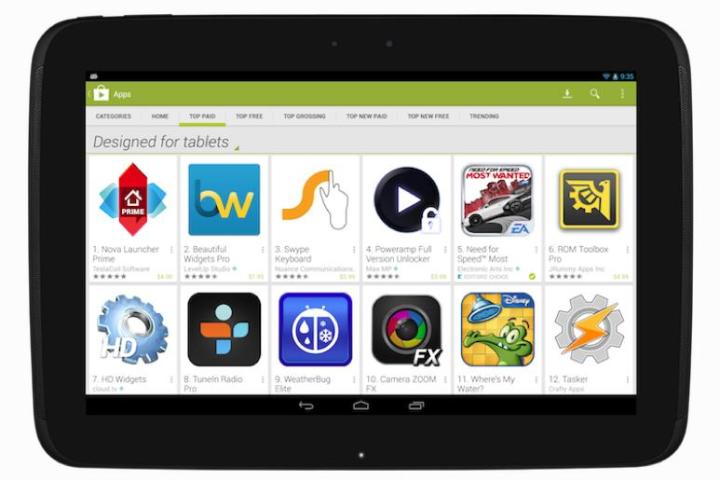
Anyone visiting Google Play using a tablet will notice some changes next month as the online store moves to give tablet-optimized apps more prominence.
Starting November 21, top lists (top paid, top free, top grossing, top new paid, top new free, and trending) showing tablet-optimized apps and games will be pushed front and center as a default view to anyone visiting Google Play on a tablet.
Earlier this year, Google Play introduced a ‘designed for tablets’ section featuring apps that met particular criteria laid out in 2012. Next month’s changes will ensure tablet users have an even easier time finding software designed specifically for their Android slate.
Tablet users will still have the option to see all apps – ie. those for smartphones too – and will also be able to browse a new section marked ‘designed for phones’.
70 million
A post by Google’s Ellie Powers on the Android Developers Blog announcing the upcoming changes points out that more than 70 million Android tablets have now been activated. As a result, the Mountain View company hopes more developers will consider making tablet-optimized versions of their smartphone app, with November’s store revamp designed to improve discoverability.
“Thousands of developers have already designed their apps to look great on tablets, and with the holidays fast approaching, we’re making it even easier for the next wave of tablet owners to discover great apps and games,” Powers wrote in her message to developers.
She added, “The flood of new users coupled with the increased screen size means new user experiences, more engagement and more monetization opportunities. We’re excited to see what you do.”
With the Nexus 7 in particular proving a hit with consumers since its launch in 2012, Google is keen to boost its offering of apps for larger mobile devices, in recent months offering tips on how to optimize apps for tablets as well as a 12-point ‘tablet app quality’ checklist.

